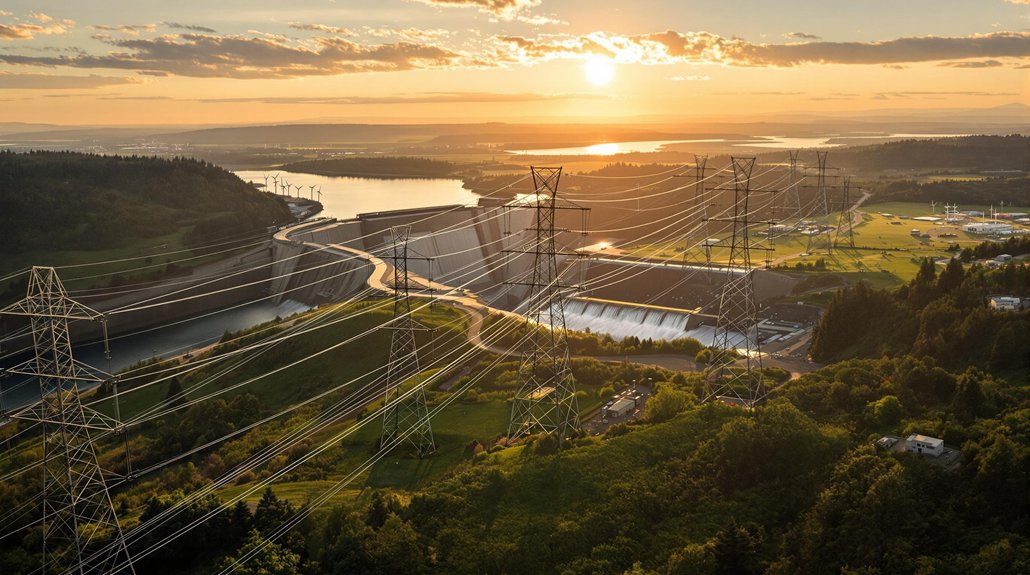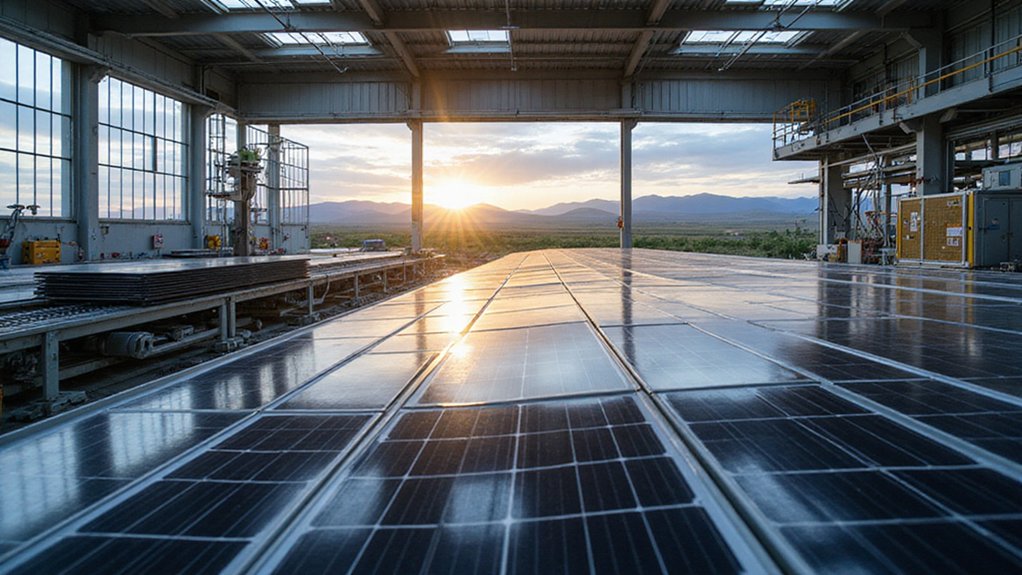The Bonneville Power Administration dominates Northwest energy. It’s massive—controlling 75% of high-voltage lines, 31 hydroelectric dams, and providing electricity to 3 million people. Self-financed and profitable, BPA sells power at cost, not market rates. Pretty sweet deal for consumers. The agency transformed the region into America’s wind power darling while saving enough energy to power Seattle. This invisible giant shapes more than just your electric bill.
While most residents of the Pacific Northwest flip on their lights without a second thought, the Bonneville Power Administration silently orchestrates an energy symphony behind the scenes. This behind-the-curtain powerhouse markets 28% of the Northwest’s electricity and operates a whopping 75% of high-voltage transmission lines. Not exactly a small player.
BPA manages 31 federal hydroelectric dams across the region, serving 3 million people who probably couldn’t pick the agency out of a lineup. They’re entirely self-financed. No taxpayer handouts here—they actually pay back the U.S. Treasury with interest. Imagine that.
Their transmission infrastructure is massive—15,000+ circuit miles of high-voltage lines and 261 substations dotting the Northwest landscape like an electrical connect-the-dots puzzle. They’ve recently restored $2 billion in Treasury borrowing authority. Big money for big plans.
The Columbia Generating Station contributes 1,200 MW to their portfolio as the third largest power resource in the region. It provides 13% of BPA’s firm energy while offsetting 3.6 million metric tons of carbon dioxide annually. Mother Nature says thanks.
Since 1980, their energy efficiency programs have saved over 1,000 average megawatts. That’s enough juice to power a Seattle-sized city. Not too shabby. The current forecasts show BPA is on track to acquire 340.7 aMW of energy efficiency by 2027, exceeding their minimum target.
BPA sells wholesale power at cost, not market price. Revolutionary concept, right? This approach delivered $500 million in interest expense savings between 2001 and 2012, with another projected $2 billion in gross interest savings from 2014 onward. All without Congress opening its wallet.
The agency has transformed the Northwest into the fastest-growing wind power market in the region. Their hydropower provides perfect backup when the wind decides to take a day off. A recent milestone shows their commitment, with wind generation reaching a peak of 3,006 megawatts on a single day in February 2011. While hydropower dominates their portfolio, BPA is gradually incorporating other renewables to join the global push toward renewable energy growth that’s projected to supply 46% of worldwide electricity by 2030.
Looking ahead, BPA faces the challenge of developing post-2028 contracts through their Provider of Choice program. They’re juggling aging workforce concerns while trying to balance clean energy goals with reliability demands. Easy? Nope. Necessary? Absolutely.








